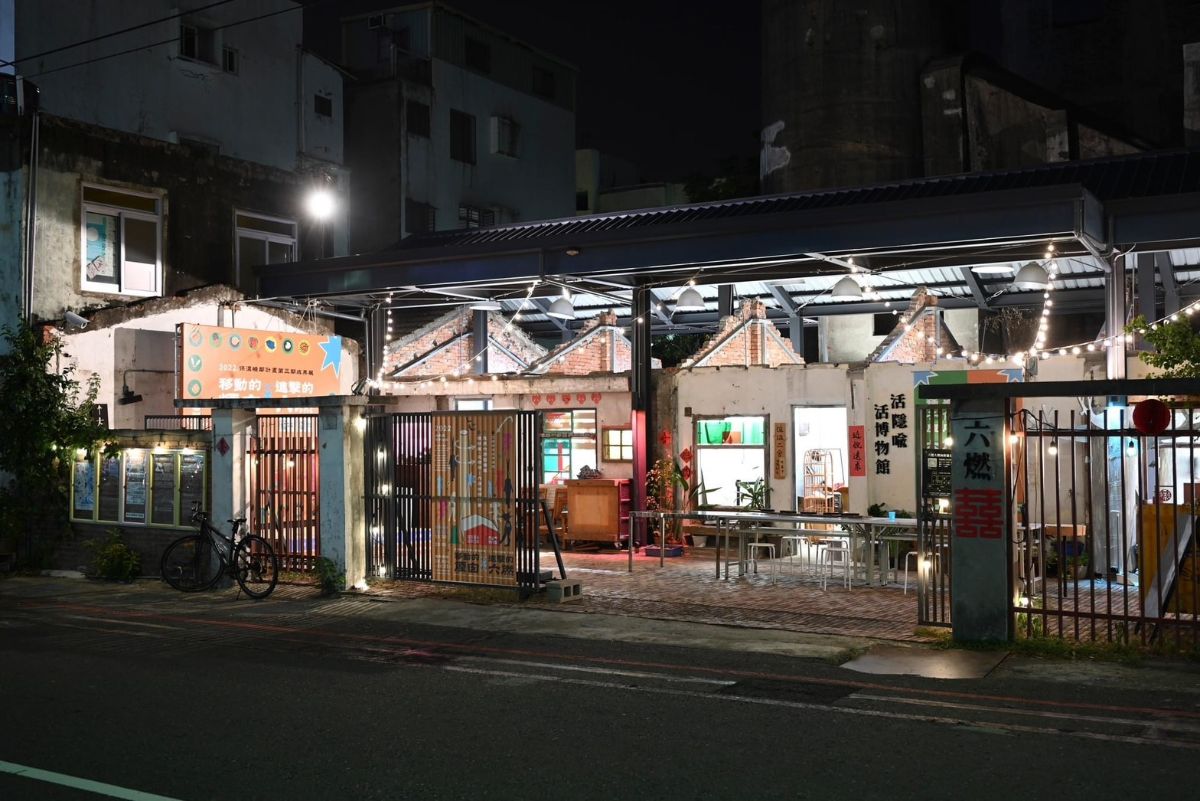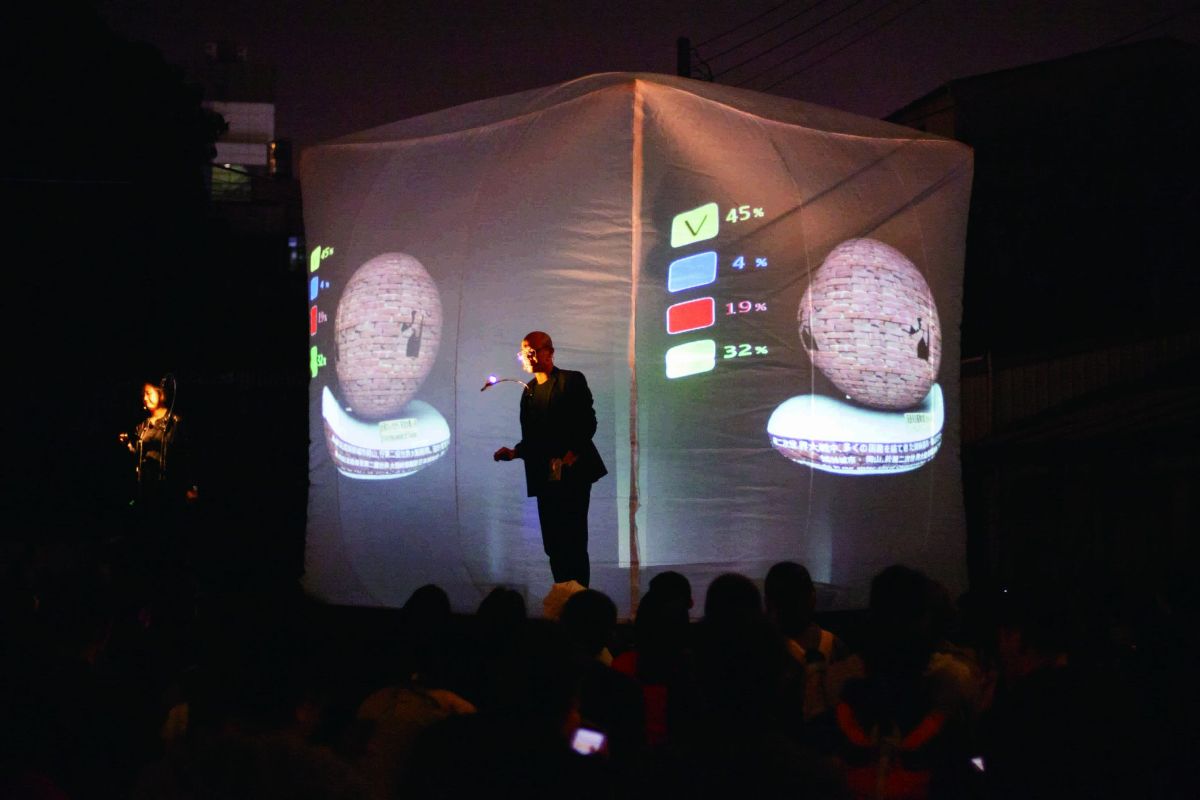Latest News
From Chimneys to a Living Museum! NYCU Facilitates the Magical Transformation The Sixth Fuel Factory: An Interview with Director Wen-Shu Lai from the Institute of Applied Arts
Date: 2024-01-04:行政單位

Professor Wen-Shu Lai, the project leader of the Six Fuel Factory and the director of the Institute of Applied Arts at NYCU,
emphasizes the pivotal role that Hsinchu played in early urban and technological development.
emphasizes the pivotal role that Hsinchu played in early urban and technological development.
By NYCU Alumni Voice
Translated by Emily C.
Edited by Elaine Chuang
______
Edited by Elaine Chuang
______
Nestled on Jianmei Road in Hsinchu City, the 'Sixth Fuel Factory' stands tall with its iconic sixty-meter chimney, serving as a prominent local landmark and the focal point of the “The Making of Hsinchu Living Museum for Social Inclusion and Common Good” project.
Originally part of the vast grounds of the "Japanese Sixth Navy Fuel Factory Hsinchu Branch" during the Japanese colonial period, the Sixth Fuel Factory specialized in synthesizing isooctane for wartime needs. Following the arrival of the Nationalist government in Taiwan, the Sixth Fuel Factory and the Zhongzhen New Village gradually integrated. In 2013, it was designated as a cultural park by the Hsinchu City Cultural Affairs Bureau, leading to the relocation of all residents.
Empowering Local Residents with the Authority to Interpret History
Professor Wen-Shu Lai, the project leader of the Six Fuel Factory and the director of the Institute of Applied Arts (IAA) at National Yang Ming Chiao Tung University (NYCU), emphasizes the pivotal role of Hsinchu in early urban and technological development. The biomass energy industry initiated by the Sixth Fuel Factory laid the foundation for subsequent high-tech industries in Hsinchu.
From an ecological perspective, the large chimney and the tin-roofed houses in the nearby public housing reveal traces of Asian parti-colored bats, signifying a natural environment conducive to other species. Interestingly, some of the NYCU faculty housing is situated on the former grounds of the Sixth Fuel Factory, a fact less known to many.
Originally part of the vast grounds of the "Japanese Sixth Navy Fuel Factory Hsinchu Branch" during the Japanese colonial period, the Sixth Fuel Factory specialized in synthesizing isooctane for wartime needs. Following the arrival of the Nationalist government in Taiwan, the Sixth Fuel Factory and the Zhongzhen New Village gradually integrated. In 2013, it was designated as a cultural park by the Hsinchu City Cultural Affairs Bureau, leading to the relocation of all residents.
Empowering Local Residents with the Authority to Interpret History
Professor Wen-Shu Lai, the project leader of the Six Fuel Factory and the director of the Institute of Applied Arts (IAA) at National Yang Ming Chiao Tung University (NYCU), emphasizes the pivotal role of Hsinchu in early urban and technological development. The biomass energy industry initiated by the Sixth Fuel Factory laid the foundation for subsequent high-tech industries in Hsinchu.
From an ecological perspective, the large chimney and the tin-roofed houses in the nearby public housing reveal traces of Asian parti-colored bats, signifying a natural environment conducive to other species. Interestingly, some of the NYCU faculty housing is situated on the former grounds of the Sixth Fuel Factory, a fact less known to many.

The Six Fuel Factory coexists harmoniously with the local community (Photo from Hsinchu Living Museum)
Wen-Shu Lai adopts the concept of a 'Living Museum,' challenging the conventional notion of museums as repositories of various discourses. Through diverse activities and performances, participants are provided with opportunities to reevaluate history. By intertwining past and present perspectives through multiple representations, the interpretive authority of history is handed over to those who genuinely live in the area. Despite being immovable assets, historical buildings can undergo rejuvenation through community engagement.
Therefore, Wen-Shu Lai's team has designed a series of activities that allow visitors to "experience and empathize" with the events. For example, the "Sixth Fuel Factory International Interactive Theater" collaborates with PostTheater from Berlin, Germany, to create two plays exploring the themes of "forgiveness and reconciliation" from both local and international perspectives.

In the interactive segments of the theater, the audience can use their smartphones to voice opinions on Taiwan's history during World War II, contributing to the creation of a digital monument. (Photo from NYCU Insulation Team)
The theater incorporates interactive elements using technology, such as 'Easter eggs,' enabling the audience to collaboratively create a digital 'World War II memorial' using the IoTtalk (IoT platform and voting system) developed by Professor Jason Yi-Bing Lin from NYCU. This collaborative effort aims to construct Taiwan's history of World War II and contemplate the significance of memorials and the complexity of that era's political and temporal context.
To enhance public understanding of the Sixth Fuel Factory's history, architectural features, and ecological landscape, the Hsinchu City Cultural Affairs Bureau has initiated the simple refurbishment of six nearby military dependents' houses, transforming them into a community warming and neighborly base. In one corner of this base, a replica of a chicken coop added by village residents for their livelihood houses six hens.
During a visit by a 90-year-old grandmother with her grandson, reminiscences of the past were shared, weaving a connection across generations. Nearby restaurants contribute kitchen leftovers as chicken feed, and the eggs laid by the hens are then returned to the restaurants by the Sixth Fuel team, integrating the warming and neighborly base into the daily lives of the community.
From Local Identity to Cultural Heritage
Kun-yu Wang, who once worked at Sixth Fuel, still recalls the factory's anthem, 'Song of Sixth Fuel,' a precious living historical artifact preserved through modern technology and included in the documentary 'My Home, the Big Chimney.
Similarly, students and teachers from Hsinchu Shu Guang Girls' Senior High School have spontaneously composed a song, 'Chimney, Chimney,' as their creative contribution to the Six Refined story, indicating that local cultural heritage has taken root in the lives of the new generation.
The Living Museum project has established a paradigm, fostering local identity and cultural heritage. Even after completing the project, Wen-Shu Lai humbly declares herself a 'new resident of Hsinchu.' The journey from awakening identity to achieving cultural heritage is challenging but worthwhile. Wen-Shu Lai sincerely concludes, "This is the university's social responsibility!"
Similarly, students and teachers from Hsinchu Shu Guang Girls' Senior High School have spontaneously composed a song, 'Chimney, Chimney,' as their creative contribution to the Six Refined story, indicating that local cultural heritage has taken root in the lives of the new generation.
The Living Museum project has established a paradigm, fostering local identity and cultural heritage. Even after completing the project, Wen-Shu Lai humbly declares herself a 'new resident of Hsinchu.' The journey from awakening identity to achieving cultural heritage is challenging but worthwhile. Wen-Shu Lai sincerely concludes, "This is the university's social responsibility!"

